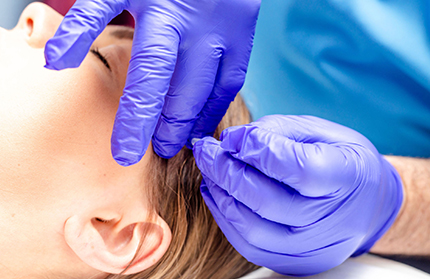Introduction
Losing partial or total control of urine is not “just part of getting old” and is not normal. One in three women are affected by urinary incontinence and some women do not recognize it as a problem. Frequently women are hesitant to talk about this problem as they are often caring for others or “too busy”. While medication and surgery are often viable options for treatment of this condition, a less invasive treatment option also exists. Physical therapy is a conservative treatment method for women suffering from stress, urge, mixed or overflow incontinence.
Stress incontinence occurs when partial or total loss of urine occurs with daily activities like coughing, sneezing, laughing or exercising. Frequently, those afflicted with stress incontinence also notice leakage with small movements like twisting, standing or lifting. The lack of strength in the supporting muscles of the bladder and pelvic floor are usually to blame. Learning how to correctly strengthen these muscles can restore your body’s normal ability to maintain control of your bladder and urine.
Urge incontinence occurs when an intense and immediate urge to urinate is followed by partial or total loss of bladder control. Those with urge incontinence usually take frequent night-time trips to the bathroom or never quite make it in time. Numerous triggers can contribute to urge incontinence, but treatment is available. Urge incontinence is attributable to “overactive bladder”, which can result from damage to the brain or spinal cord or to the nerves that control the bladder. Even in cases where there is no identifiable cause, treatment is still possible once the impairments are identified.
Mixed incontinence occurs in women who have symptoms of both stress and urge incontinence. Treatment can be tailored to address muscle weakness, nerve damage, or environmental triggers contributing to the loss of urine. “Bladder retraining” is an effective and useful tool to manage and control incontinence. Teaching the bladder how to function normally assists women in restoring their normal bladder health and resuming their daily lives without the worry of leaking or wetting.
Treatment
Any form of incontinence can be treated by a specialized physical therapist after an initial evaluation occurs. The physical therapist will determine which treatment techniques are appropriate for a given condition and a specific person. The most commonly used treatment techniques are:
- biofeedback
- bladder retraining
- manual therapy
- massage therapy
- pelvic floor strengthening or retraining
- electrical stimulation
A woman’s core is a complex system of muscles, nerves, bones and organs that must work together for normal function. When one or more of these systems become out of balance, women-specific conditions occur, including incontinence or pelvic pain. Pelvic pain symptoms are often hard to describe, but the cause is frequently treatable with manual therapy or other modalities. Some women experience pain with yearly exams or intercourse, while others experience low back, hip or pubic pain during pregnancy. Due to structural and hormonal changes, pregnant women may experience low back or leg pain. Physical therapy can provide an individualized exercise routine combined with manual therapy techniques to ease pain and improve daily function. Manual therapists are trained in hands-on techniques that address impaired muscles or tissues in the pelvic region, back or abdomen. Manual therapy can assist in reducing tone in muscles that are too tight or increasing the ability of a weak muscle to contract through myofascial release
For more information please call (314) 916-1093.

